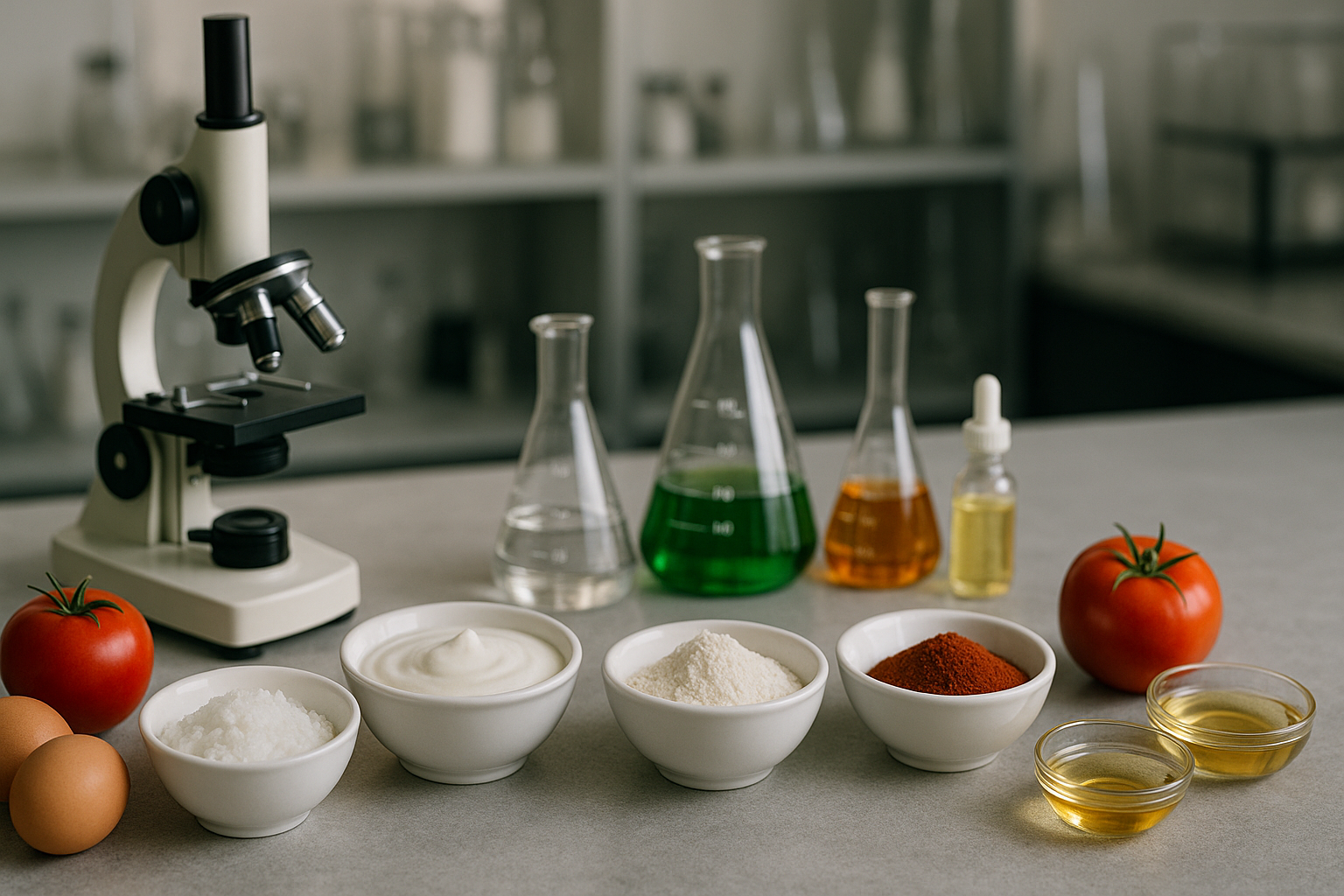Introduction
High Methoxy (HM) Pectin is a natural hydrocolloid extracted from citrus peels and apple pomace. Known for forming gels only in the presence of sugar and acid, HM pectin is the classic gelling agent used in jams, jellies, fruit preserves, and confectionery. This guide explains what HM pectin is, how it’s made, its culinary uses, and why it remains essential in food science and cooking.
Quick Answers About HM Pectin
What is HM pectin used for?
It’s used in jams, jellies, preserves, fruit fillings, and candies that require sugar and acid to gel.
Is HM pectin vegan?
Yes. It’s derived from fruit peels and pomace, making it plant-based and vegan-friendly.
What’s the typical usage rate?
Generally 0.5–1.5% of the total recipe weight, depending on the desired firmness.
How is HM different from LM pectin?
HM pectin requires sugar and acid to gel, while LM pectin gels in the presence of calcium.
Does HM pectin affect flavor?
No. It is neutral in taste and preserves the natural flavor of fruit-based recipes.
What is HM Pectin?
High Methoxy Pectin is a polysaccharide naturally found in fruit cell walls. It’s characterized by a high degree of esterification (more than 50%), which allows it to gel in systems with both sugar and acid. This property makes HM pectin indispensable in jams, jellies, and other sweet preserves where it creates smooth, stable gels.
How is HM Pectin Made?
- Extraction: Pectin is extracted from citrus peels or apple pomace with hot water.
- Purification: The extract is filtered and treated to remove impurities.
- Precipitation: Alcohol is often used to precipitate pure pectin.
- Drying & Milling: The pectin is dried and ground into powder for commercial use.
Culinary Uses of HM Pectin
- Jams & Jellies: Creates firm, glossy gels in fruit preserves.
- Fruit Fillings: Provides consistency in baked goods and pastries.
- Confectionery: Used in fruit candies, gummies, and pate de fruit.
- Dairy Applications: Helps stabilize yogurts and fruit-on-the-bottom products.
- Beverages: Improves mouthfeel in juice-based drinks.
Benefits & Functional Properties
- Forms sugar-acid gels with smooth texture.
- Neutral flavor — preserves natural fruit taste.
- Vegan, plant-derived, and gluten-free.
- Provides glossy appearance to jams and jellies.
- Widely approved for food use worldwide.
Not all hydrocolloids behave the same way. Some are best for building viscosity and stabilizing liquids, while others are true gelling agents that create firm or elastic structures. A few can do both, depending on the partners they’re combined with. The table below highlights the difference between thickening and gelling functions at a glance:
Thickening vs Gelling Function of Hydrocolloids
Full Companion Table| Hydrocolloid | Primary Function | Notes |
|---|---|---|
| Xanthan Gum | Thickener / Stabilizer | Shear-thinning; excellent for sauces and dressings. |
| Guar Gum | Thickener | Adds viscosity in cold and hot systems; synergizes with xanthan gum. |
| Locust Bean Gum | Thickener + Gel Synergist | Alone it thickens; forms gels in synergy with carrageenan or xanthan. |
| Carrageenan (Kappa) | Gelling Agent | Firm, brittle gels; works with potassium and dairy proteins. |
| Carrageenan (Iota) | Gelling Agent | Forms soft, elastic gels with calcium; good freeze–thaw stability. |
| Agar | Gelling Agent | Strong, brittle gels; sets at high temp and remains stable when reheated. |
| Pectin (HM) | Gelling Agent | Gels with sugar + acid; used in jams and jellies. |
| Pectin (LM) | Gelling Agent | Forms gels with calcium; ideal for low-sugar products. |
One of the most common questions chefs and food developers ask is whether a gelling agent is vegan-friendly. While some, like gelatin, are animal-derived, most modern hydrocolloids come from plants or microbial fermentation. Here’s a quick guide to which are vegan and which are not:
Vegan vs Non-Vegan Gelling Agents
Full Companion Table| Gelling Agent | Vegan? | Notes |
|---|---|---|
| Gelatin | ❌ Non-Vegan | Animal-derived from collagen; common in gummies, marshmallows, and desserts. |
| Agar-Agar | ✅ Vegan | Seaweed-derived; creates firm, brittle gels; common gelatin substitute. |
| Carrageenan (Kappa/Iota/Lambda) | ✅ Vegan | Extracted from red seaweed; versatile gelling and thickening functions. |
| Pectin | ✅ Vegan | Fruit-derived (citrus peel, apple pomace); essential in jams and jellies. |
| Gellan Gum | ✅ Vegan | Produced by microbial fermentation; creates clear, stable gels. |
| Alginate | ✅ Vegan | Seaweed-derived; gels with calcium; key in molecular gastronomy (spherification). |
Where to Buy HM Pectin
Cape Crystal Brands offers premium-quality HM Pectin for jams, jellies, and confectionery.
👉 Shop HM Pectin Now
Frequently Asked Questions
What makes HM pectin unique?
HM pectin requires sugar and acid to form gels, making it ideal for jams and jellies.
Can HM pectin be used in low-sugar recipes?
Not effectively. LM pectin is better suited for low-sugar or sugar-free formulations.
Is HM pectin natural?
Yes, it’s derived from fruit peels and apple pomace, both natural plant sources.
Related Gelling Agents
Discover other hydrocolloids used for gelling and fruit preparations:





